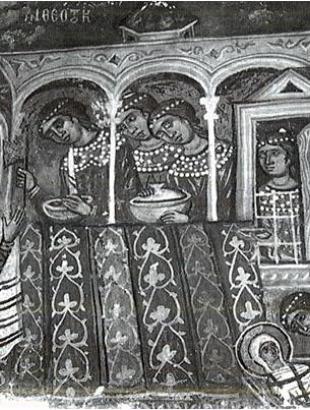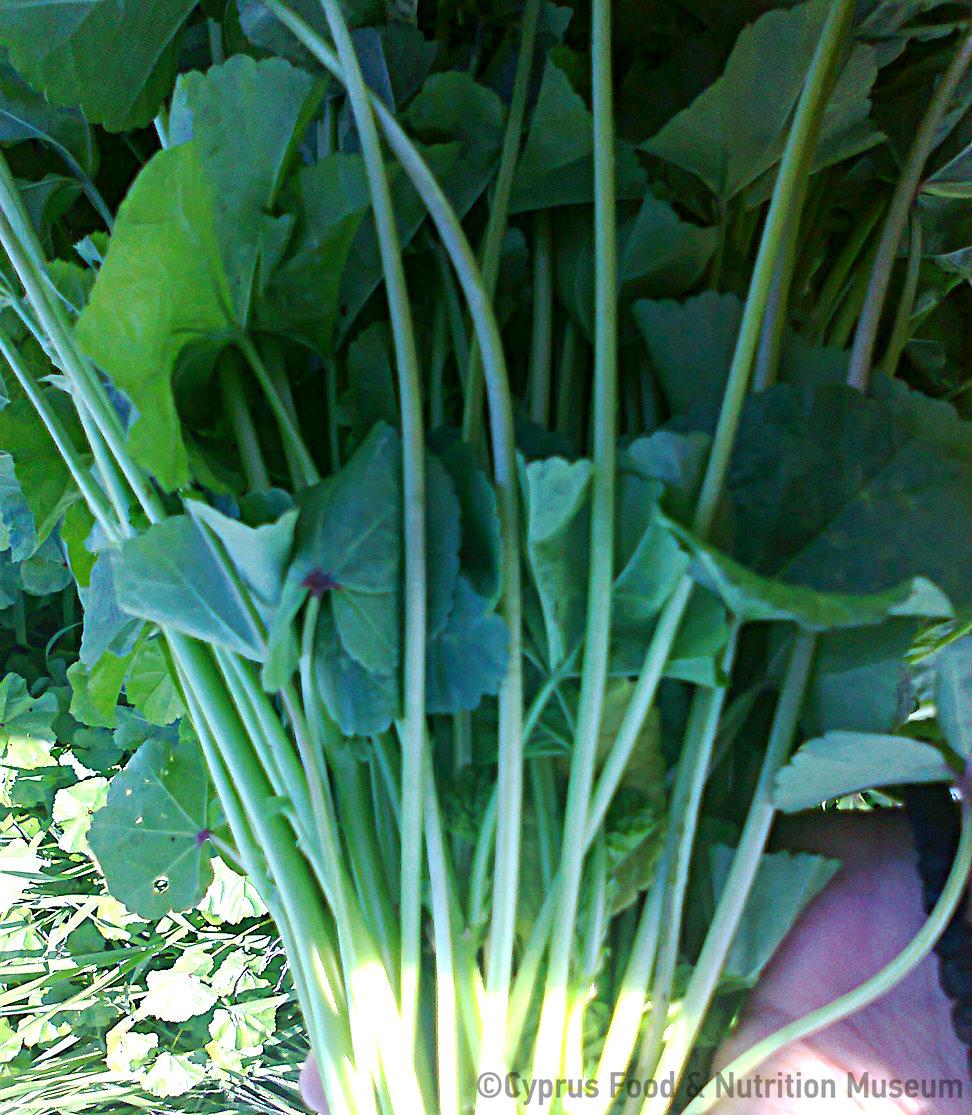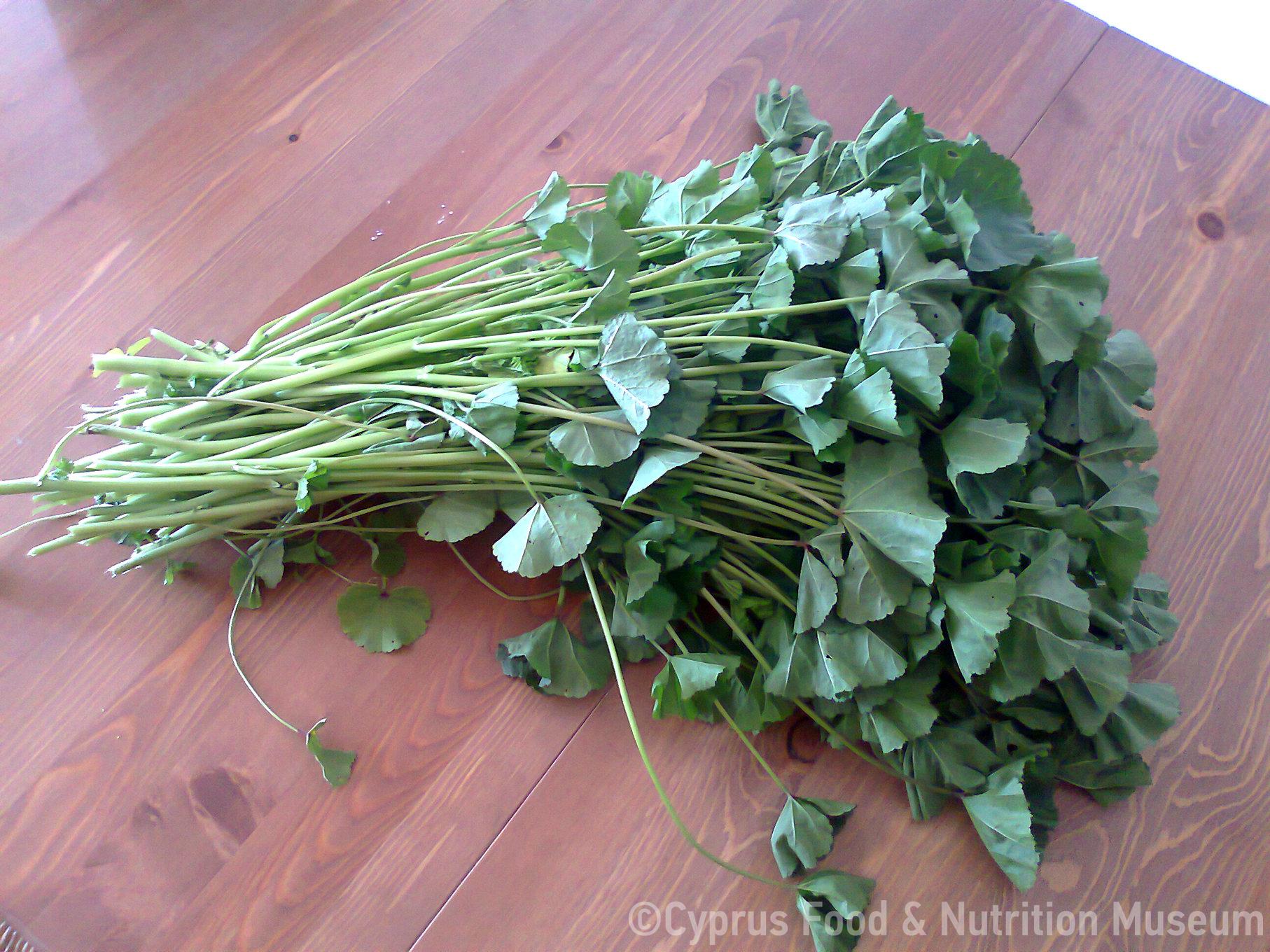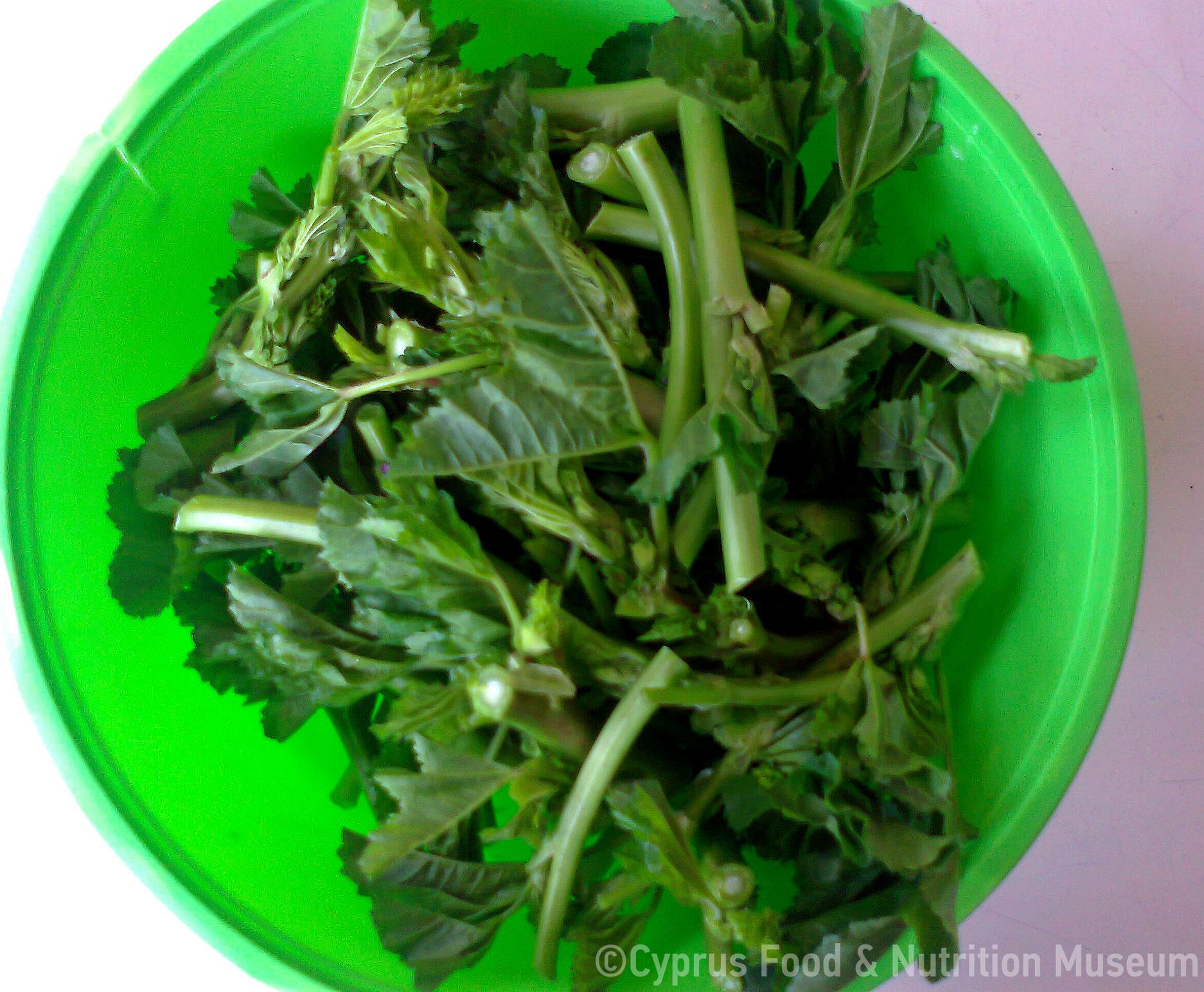
Άγρια φυτά. Λεπτομέρεια από τη σκηνή της Γέννησης του Χριστού στο ναό του Ιησού Χριστού Αντιφωνητή, ύστερος 12ος αι.A. Papageorgiou 1998. “The Church of Christ Antiphonetes in the village of Kalograia, Kyrenia”. Στο Committee for the Protection of the Cultural Heritage of Cyprus, Cyprus, A Civilization Plundered, σελ. 186. Athens: The Hellenic Parliament.
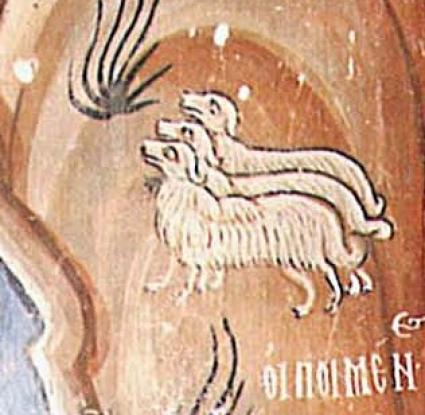
Edible green. Malva sylvestris.
Name - Origin
Μολόχα. A wild green.
Scientific name: Malva sylvestris.
Functional and symbolic role
According to a decree of the Roman emperor Diocletian, mallow was also used as an edible (Koukoules 1952, p. 89), while in Byzantine medical books mallow is mentioned in a list healthy and unhealthy vegetables (Motsias 1998, p. 82).
Additional information and bibliography
According to F. Koukoules (1952, p. 89), moloha in Cyprus was cooked as a soup, while when the stem was thick, it was fried. There are many instances in Byzantine iconography of Cyprus where food (probably watery, such as the various soups) is served in covered deep vessels, such as that depicted in the scene of the Nativity of the Virgin Mary in the Church of the Holy Cross at Pelendri.
F. Koukoules, 1952. Βυζαντινών Βίος και Πολιτισμός. Vol. E. Athens.
Χ. Motsias, 1998. Τι έτρωγαν οι Βυζαντινοί. Athens: Kaktos Publications.
A. Papageorgiou, 1998. “The Church of Christ Antiphonetes in the village of Kalograia, Kyrenia”. Στο Committee for the Protection of the Cultural Heritage of Cyprus, Cyprus, A Civilization Plundered. Athens: The Hellenic Parliament.
J.T. Wollesen, 2010. Patrons and Patrons on Cyprus: The Frescoes in the Royal Chapel at Pyrga. Toronto: Pontifical Institute of Medieval Studies.
Athanassios Vionis
